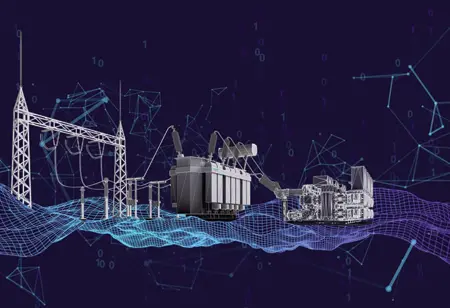Thank you for Subscribing to Electrical Business Review Weekly Brief
I agree We use cookies on this website to enhance your user experience. By clicking any link on this page you are giving your consent for us to set cookies. More info
Electrifying Heavy Industries: Electric Motors Reshaping Manufacturing and Construction
To revolutionise heavy industries, electric motors are making a resounding entrance into sectors like manufacturing and construction.

By
Electrical Business Review | Friday, September 15, 2023
Stay ahead of the industry with exclusive feature stories on the top companies, expert insights and the latest news delivered straight to your inbox. Subscribe today.
Developing nations are increasingly adopting electric vehicle (EV) technologies to combat air pollution, enhance energy security, and revolutionize urban mobility.
FREMONT, CA: To revolutionise heavy industries, electric motors are making a resounding entrance into sectors like manufacturing and construction, promising to reshape productivity, minimise emissions, and bolster operational safety. As these industrial juggernauts embrace the shift towards sustainability, the adoption of electric motors is emerging as a catalyst for transformative change.
Manufacturing, often associated with energy-intensive processes, is undergoing a remarkable transformation with the introduction of electric motors. These motors offer several key advantages over their traditional counterparts, such as reduced energy consumption and lower maintenance requirements. By incorporating electric motors into production lines, manufacturers are not only cutting down on operational costs but also reducing their carbon footprint. Electric motors, known for their higher efficiency rates, contribute to a significant reduction in greenhouse gas emissions compared to conventional internal combustion engines.
In the construction sector, electric motors are redefining how heavy machinery operates on job sites. Construction equipment, historically powered by fossil fuels, is now undergoing an electrification revolution. Electric motors bring forth a unique combination of power and efficiency, enabling construction equipment to operate with reduced noise pollution and zero tailpipe emissions. This shift aligns with urban development goals that emphasise sustainability and improved air quality within densely populated areas.
Moreover, the incorporation of electric motors in construction machinery enhances operational safety. Electric motors generate less heat and produce fewer vibrations compared to internal combustion engines, creating a safer working environment for operators and nearby personnel. This translates to a decreased risk of accidents and injuries, particularly in high-risk construction sites.
While the adoption of electric motors in heavy industries presents numerous benefits, challenges remain. One key obstacle is the upfront investment required to replace existing machinery with electric-powered alternatives. However, as technology advances and economies of scale come into play, the initial costs are expected to decrease, making the transition more financially feasible.
Another challenge is the establishment of a robust charging infrastructure to support electric machinery in these industries. Manufacturers and construction companies need reliable charging solutions to ensure uninterrupted operations, especially for equipment that requires frequent and extended usage periods.
In conclusion, the integration of electric motors into heavy industries like manufacturing and construction is ushering in a new era of sustainability, productivity, and operational safety. As enterprises recognize the potential for cost savings, emissions reduction, and enhanced safety standards, the adoption of electric motors becomes not only a strategic choice but a transformative force driving these sectors into a more sustainable future.








